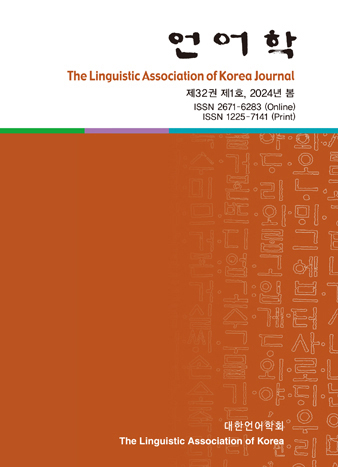대한언어학회 전자저널

32권 1호 (2024년 3월)
- 인공지능 학습을 위한 중노년층 방언 음성 데이터 구축 전략 및 분석
-
옥성수 · 김수연
Pages : 1-19
Abstract
Ok, Sungsoo & Kim, Soo-Yeon. (2024). Strategies and analysis for constructing middle-aged and elderly dialect speech data for artificial intelligence training. The Linguistic Association of Korea Journal, 32(1), 1-19. This paper presents a comprehensive strategy and analysis for constructing dialect speech data for middle-aged and elderly populations aimed at enhancing artificial intelligence (AI) training. Recognizing the critical role of high-quality, diverse speech datasets in improving AI's real-world performance, especially in speech recognition, this study focuses on the underrepresented dialects of older demographics. It outlines the methodologies employed in collecting, processing, and labeling the speech data, ensuring the inclusion of various dialectical nuances, intents, and emotional states. Additionally, the paper discusses the project's challenges, including ensuring data diversity and the technical aspects of data processing. By addressing these areas, the research contributes to the development of AI systems better attuned to the linguistic diversity and needs of older users, potentially improving AI accessibility and user experience across different applications.
Keywords
# 인공지능 학습용 데이터(AI training data) # 노인 음성(elderly speech) # 방언 데이터(dialect data) # 데이터 라벨링(data labeling) # 발화 의도(speech intent) # 감성(emotion)
References
- 류성기. (2016). 경남 하동 방언의 문법 형태와 세대 및 의식 변화에 따른 문법 형태 사용 변화 연구. 국제언어문학, 33, 1-37.
- 류성기. (2017). 남원 방언 문법 형태와 사용 양상 변화 연구. 국제언어문학, 37, 57-94.
- 심우창, 진혜빈, 김세진, 김선동. (2023). ARC 문제 해결을 위한 프롬프트 엔지니어링의 가능성. 한국정보과학회 학술발표논문집, 397-399.
- 이기갑. (2008). 농촌 지역의 이주 외국인 여성들을 위한 방언 교육. 한글, 280, 165-202.
- 장영우, 서하린, 서영균. (2023). 주어진 주제에 대한 소셜미디어 데이터셋 생성을 위한 파이프라인 설계 및 구현. 한국정보과학회 학술발표논문집, 438-440.
- Beese, C., Vassileiou, B., Friederici, A. D., & Meyer, L. (2019). Age differences in encoding-related alpha power reflect sentence comprehension difficulties. Frontiers in Aging Neuroscience, 11. https://doi.org/10.3389/fnagi.2019.00183
- Fukuda, M., Nishizaki, H., Iribe, Y., Nishimura, R., & Kitaoka, N. (2020). Improving speech recognition for the elderly: a new corpus of elderly Japanese speech and investigation of acoustic modeling for speech recognition. In Proceedings of the Twelfth Language Resources and Evaluation Conference, 6578–6585, Marseille, France. European Language Resources Association.
- Harnsberger, J. D., Shrivastav, R., Brown, W. S., Rothman, H., & Hollien, H. (2008). Speaking rate and fundamental frequency as speech cues to perceived age. Journal of Voice, 22(1), 58-69.
- Horton, W. S., Spieler, D. H., & Shriberg E. (2010). A corpus analysis of patterns of age-related change in conversational speech. Psychology and Aging, 25(3), 708-713.
- Jakobson, R. (1960). Closing statements: linguistics and poetics. In T. A. Sebeok (Ed.), Style in Language (pp. 350-377). MIT Press.
- Kemper, S., Herman, R., & Lian, C. (2003)., Age differences in sentence production. The Journals of Gerontology: Series B, 58(5), 260–268.
- Khatun, R. & Sarkar, A. (2024). Deep-keyword net: automated English keyword extraction in documents using deep keyword network based ranking. Multimed Tools Applications. https:/doi.org/10.1007/s11042-024- 18110-5
- Linville, S. E. & Rens, J. (2001). Vocal tract resonance analysis of aging voice using long-term average spectra. Journal of Voice, 15(3), 323-330.
- Searle, J. R. (1969). Speech acts: An essay in the philosophy of language. Cambridge University Press.